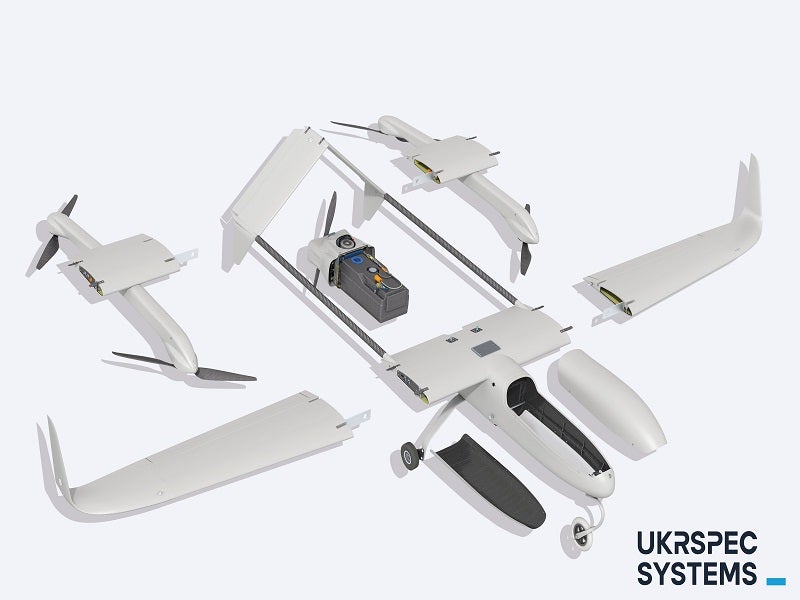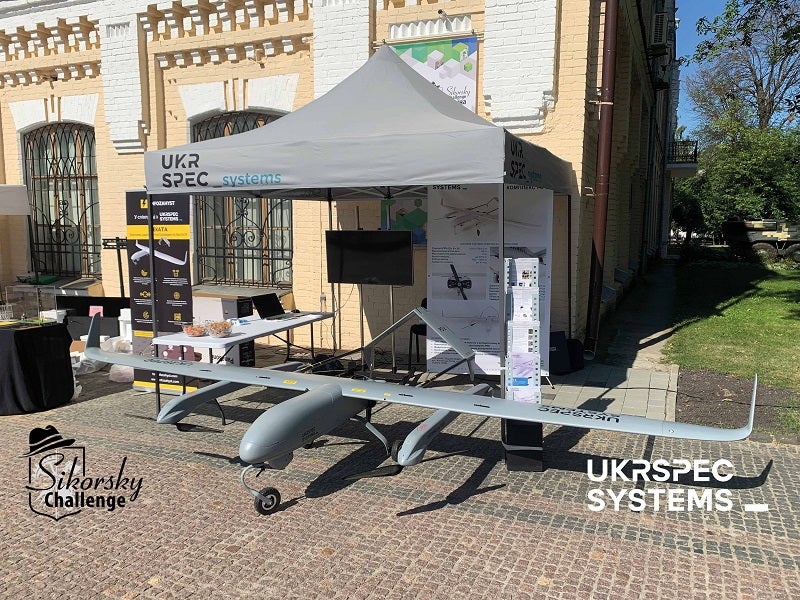PD-2 is a versatile unmanned aerial system (UAS) manufactured by Ukrspecsystems, an unmanned aircraft systems manufacturer based in Ukraine. It is a multi-utility solution suitable for operation in challenging weather conditions.
The vertical take-off and landing (VTOL) UAV is available in different configurations including PD-2 VTOL, PD-2 fixed-wing with 4m wingspan, and PD-2 fixed-wing with 5m wingspan.
The unmanned system was approved for military operations in 2020 following the successful completion of the final tests at the State Research Institute of Testing and Certification of Arms and Military Equipment in Chernihiv, Ukraine.
The PD-2 UAV participated in military exercises conducted by the Ukrainian Army in June 2021. It was also demonstrated during the Independence Day military parade held in Kyiv, Ukraine, in August 2021.
PD-2 UAV design and features
PD-2’s flexible design allows the airframe configuration to be changed on the go within 15 minutes to meet the different mission requirements. The VTOL configuration does not require a runway and can take-off and land on a ship deck, while the conventional fixed-wing configuration with chassis needs a runway to take-off and land.
The conventional fixed-wing configuration without chassis can be operated using the catapult launch and parachute recovery system, eliminating the need for a runway. The landing gear of fixed-wing version comes with a braking system to reduce the braking distance on the runway.
The PD-2 UAV can operate in temperatures ranging between -25°C and +50°С in different weather conditions including fog, rain, and mist. It has a low radar and acoustic signature, making it difficult to track and detect. The unmanned aircraft also provides automatic flight capabilities such as mission planning beforehand and completing the pre-planned flight even if the signal is lost.
The VTOL drone has a length of 2.85m, height of 1.02m, and wingspan of up to 5m. It has a maximum take-off weight of 55kg.
Mission capabilities
The PD-2 UAV can be used for military applications and cargo delivery. It can be deployed for intelligence, surveillance, and reconnaissance (ISR) missions, artillery fire spotting and correction, and general support missions. The drone can be used to conduct border surveillance missions over large areas. It can be teamed with other PD-2 systems to provide a continuous surveillance capability over specific areas.
The UAS features removable modules under wings and fuselage for the delivery of cargoes. It is designed to hover over the target and drop a maximum load of 8kg with precision. It can land at the site and drop the cargo before take-off in the VTOL configuration.
The range of cargo that can be delivered includes essential medications, ammunition supplies, and rescue kits.
PD-2 UAV payload details
The PD-2 UAV can carry a variety of high-end electro-optical/infrared (EO/IR) payloads for intelligence, surveillance, target acquisition and reconnaissance (ISTAR) operations. The standard payload package includes aerial photogrammetry with USG-212 EO/IR gimbal or USG-211 EO gimbal. Both camera gimbals provide full-HD EO/IR with 30x optical zoom, digital video stabilisation, on-board recording and storage, and target tracking. Secondary optional payloads can be loaded in the payload compartment.
The optional payloads include light detection and ranging (LiDAR), international mobile subscriber identity (IMSI) catcher, radio repeater, and synthetic aperture radar (SAR) with high-resolution remote sensing and day and night imaging capability.
Communications
The PD-2 UAV is installed with a secure encrypted connection. It will have anti-jamming capabilities for protection from interference. It can transmit live video to multiple groups via a remote terminal.
It employs line-of-sight (LoS) communications, 3G/long-term evolution (LTE), and satellite communications (SATCOM). The LoS communication datalinks are used for video and telemetry transmission with a range of more than 200km. The 3G/LTE and SATCOM links ensure long-range operations without range restrictions.
The auto-return feature allows the UAV to safely return home in the event of a global navigation satellite system (GNSS) failure or signal loss.
The drone is fitted with navigation lights for detection even in harsh weather conditions to prevent collisions. The lights can be switched off to meet stealth requirements during missions. A laser rangefinder is fitted to enable precise landing and take-off.
Ground control station of PD-2 VTOL UAV
The UAV is controlled by a ground control station (GCS). The portable GCS can be integrated separately or housed in a military vehicle trailer system. It includes a network hub with integrated uninterruptible power supply (UPS) with up to two-hour battery back-up, a remote operator control system, a payload operator mobile control station, tracking antenna unit, a quadropod, and a power generator.
The advanced software of the UAV enables capabilities such as controlling one UAV using multiple GCS systems to extend mission range and operating several drones using a single GCS to relay signals from one UAV to many. The drone can share real-time imagery to multiple GCS units and remote video terminals (RVTs), ensuring uninterrupted transmission of data to the remote operators and ground-based troops.
The ground tracking antenna unit is used for radio communication between the PD-2 UAV and the GCS. The information about the UAV’s position is used to orient the antenna in the direction of the UAV to communicate effectively. The two integrated communication channels in the antenna system enhance the reliability of the system.
The tracking antenna, which features components supplied by Silvus Technologies, has a built-in video camera and an automatic 5m mast to maximise the range of main and back-up datalinks.
Propulsion system and performance of PD-2 UAV
The UAV is powered by a 100cc four-stroke engine that burns A95 gas combined with oil. The engine module is integrated with sensors to track revolutions per minute (RPM), surrounding temperature, and fuel level. The engine can be started remotely from the GCS by the push of a button and automatically restarted during flight using the flight controller, in case of failure.
The drone is equipped with a 500W electric generator to initially power up the equipment onboard and to charge the batteries during flight. An acoustic muffler is also integrated to reduce the overall acoustic signature of the UAV. The carbon fibre fuel tank has the capacity to hold 12l of fuel.
The unmanned aircraft can achieve a cruising speed of 100km/h and a maximum flight speed of up to 160km/h. It can reach an altitude of up to 5,000m and has an endurance of eight hours in VTOL configuration and more than ten hours in conventional fixed-wing configuration.






